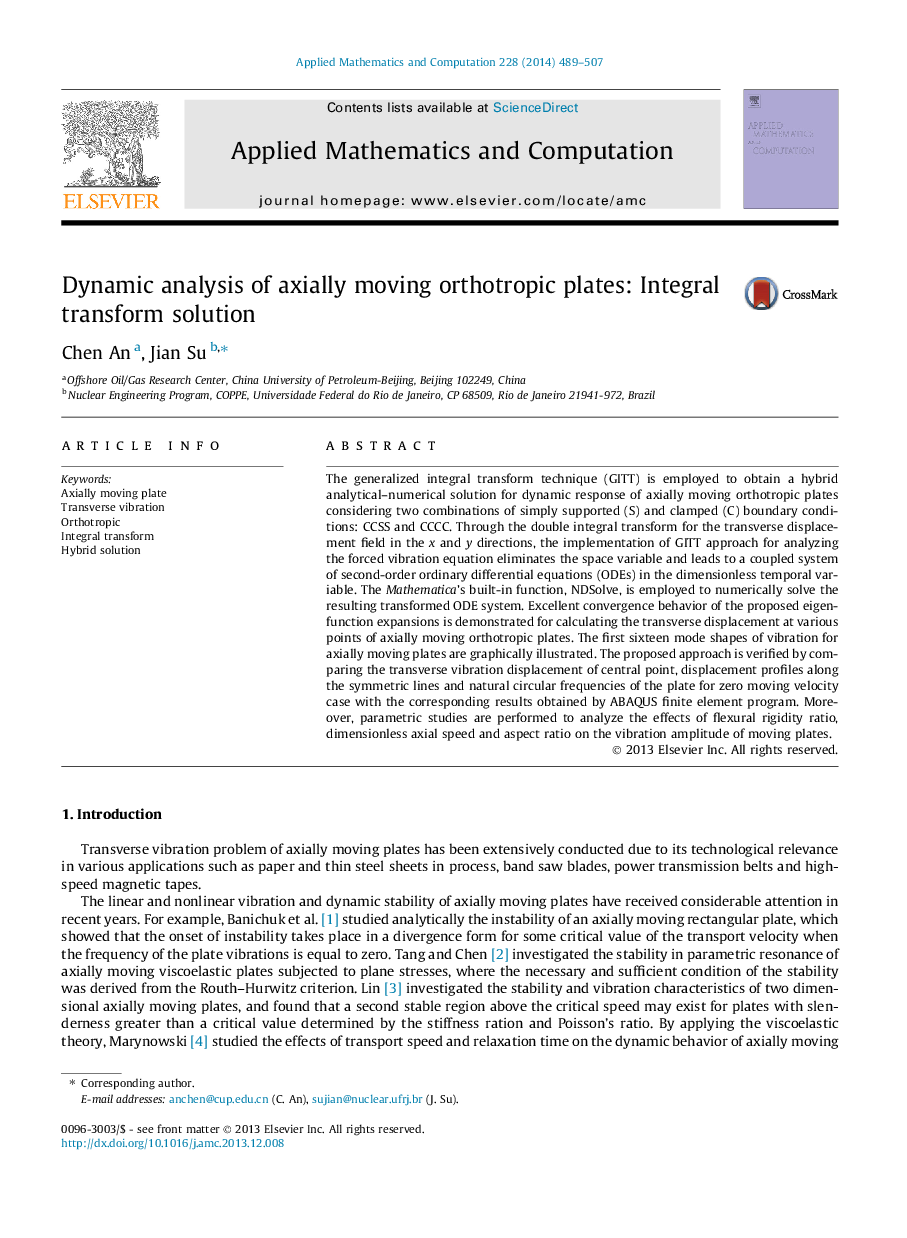| Article ID | Journal | Published Year | Pages | File Type |
|---|---|---|---|---|
| 4628358 | Applied Mathematics and Computation | 2014 | 19 Pages |
•Dynamic response of axially moving orthotropic plates was studied numerically.•The generalized integral transform technique (GITT) was applied.•Numerical solutions with automatic global accuracy control were obtained.•Excellent convergence behavior was shown.•Critical velocity of the axially moving plate was determined.
The generalized integral transform technique (GITT) is employed to obtain a hybrid analytical–numerical solution for dynamic response of axially moving orthotropic plates considering two combinations of simply supported (S) and clamped (C) boundary conditions: CCSS and CCCC. Through the double integral transform for the transverse displacement field in the x and y directions, the implementation of GITT approach for analyzing the forced vibration equation eliminates the space variable and leads to a coupled system of second-order ordinary differential equations (ODEs) in the dimensionless temporal variable. The Mathematica’s built-in function, NDSolve, is employed to numerically solve the resulting transformed ODE system. Excellent convergence behavior of the proposed eigenfunction expansions is demonstrated for calculating the transverse displacement at various points of axially moving orthotropic plates. The first sixteen mode shapes of vibration for axially moving plates are graphically illustrated. The proposed approach is verified by comparing the transverse vibration displacement of central point, displacement profiles along the symmetric lines and natural circular frequencies of the plate for zero moving velocity case with the corresponding results obtained by ABAQUS finite element program. Moreover, parametric studies are performed to analyze the effects of flexural rigidity ratio, dimensionless axial speed and aspect ratio on the vibration amplitude of moving plates.
